- Aug 27, 2022
Think Small for Crappie Fishing
Learn why downsizing crappie fishing baits can help you catch more fish during summer.
Never say never.
“Never” did crappie guide and host of The Crappie Connection Brad Chappell ever see himself doing anything in August other than long-lining jigs or pulling crankbaits, two trolling techniques that he helped develop and popularize for catching slabs in the hottest months of the year. And never did he dream his summer catch rates would nearly double because of using different crappie fishing baits and tactics. Today, though, you’re likely to find him on Mississippi’s Ross Barnett Reservoir sitting still and casting Bobby Garland Itty Bits to cover.
“It’s true.” Chappell said, “Things just clicked last summer, and tossing these little baits is my new favorite summertime way to fish, and a method my clients love because they’re at the front of the boat and fully engaged in the fun of the action, from casting to catching.”
The “little baits,” as Chappell calls them, are lures in the Bobby Garland Itty Bit series; his favorites are the Itty Bit Slab Hunt’R and Itty Bit Baby Shad Swim’R. The 1.25-inch crappie fishing baits are about half the length of their full-sized namesakes. Their diminutive stature has proven worthy for imitating many things crappie feed upon during summer, from minnows to insects. Science supports the fact that crappie love morsels.
“Summer is a time of plenty,” explained Josh Johnston, Oklahoma Department of Wildlife NE Regional Supervisor of Fisheries. “There’s plenty of food options right now. In shad waters, especially those with threadfins, you can have multiple shad spawns, and insects are constantly hatching on land and water. Add to that an extensive mayfly hatch like those happening in many places, and there’s simply no shortage of small food options for crappie, and these fish are very opportunistic feeders. This time of year, crappie can get hard to catch for a lot of reasons, and having so much food available can certainly be one. Summer is a time when fish and prey hang tight to brush.”
Chappell’s approach has proven ideal for the scenario.
Looking for Wood
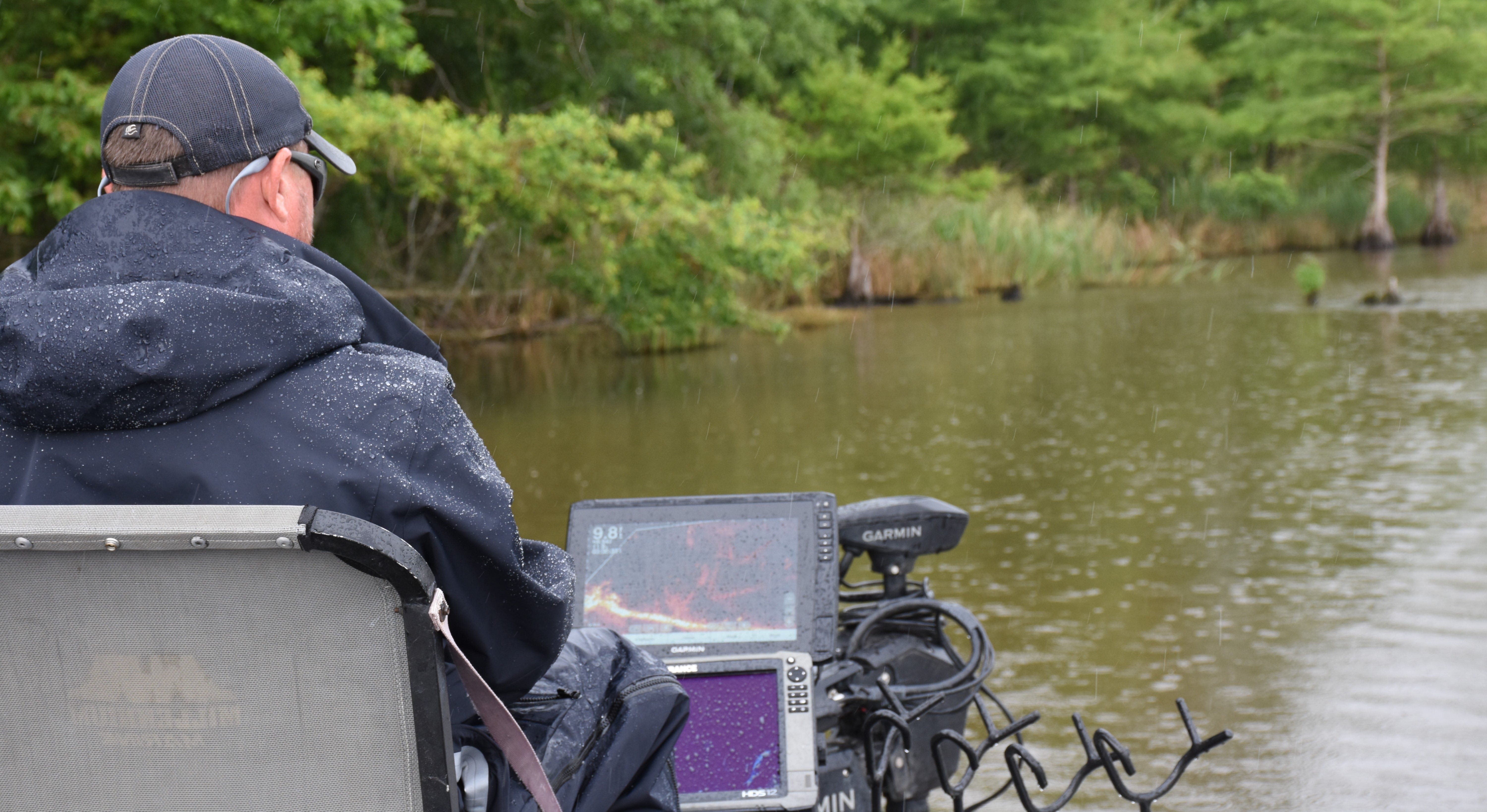

Using his Garmin LiveScope, Chappell looks for wood, including stumps, brush piles and laydowns, along creek and main channel river ledges. He prefers his transducer be mounted directly to his Garmin trolling motor so he can continually sweep back and forth as he moves along contour lines. His forward-facing sonar range is typically set at 100 feet.
Chappell begins his search at the mouths of creeks and works back into them from there. If the sky is clear, his preference is to progress facing the sun. He explains that doing so keeps the boat’s shadow behind him so as not to spook fish, and it makes his sonar screen easier to see. As for depth, he likes edges in 10 feet of water or more.
When Chappell spots an interesting piece of cover, he coasts toward it while incrementally stepping down his sonar distance settings to get the most detailed picture. He’ll stop the adjustment settings at 40 feet, and he won’t approach any closer than 20 feet.
“LiveScope has taught me a lot of things, and one is that the boat scares crappie,” he explained. “By staying a ways off the cover, I’ve found I’ll catch a lot more fish. The last two summers, I’ve doubled what I normally catch during the period.”
Setting Up
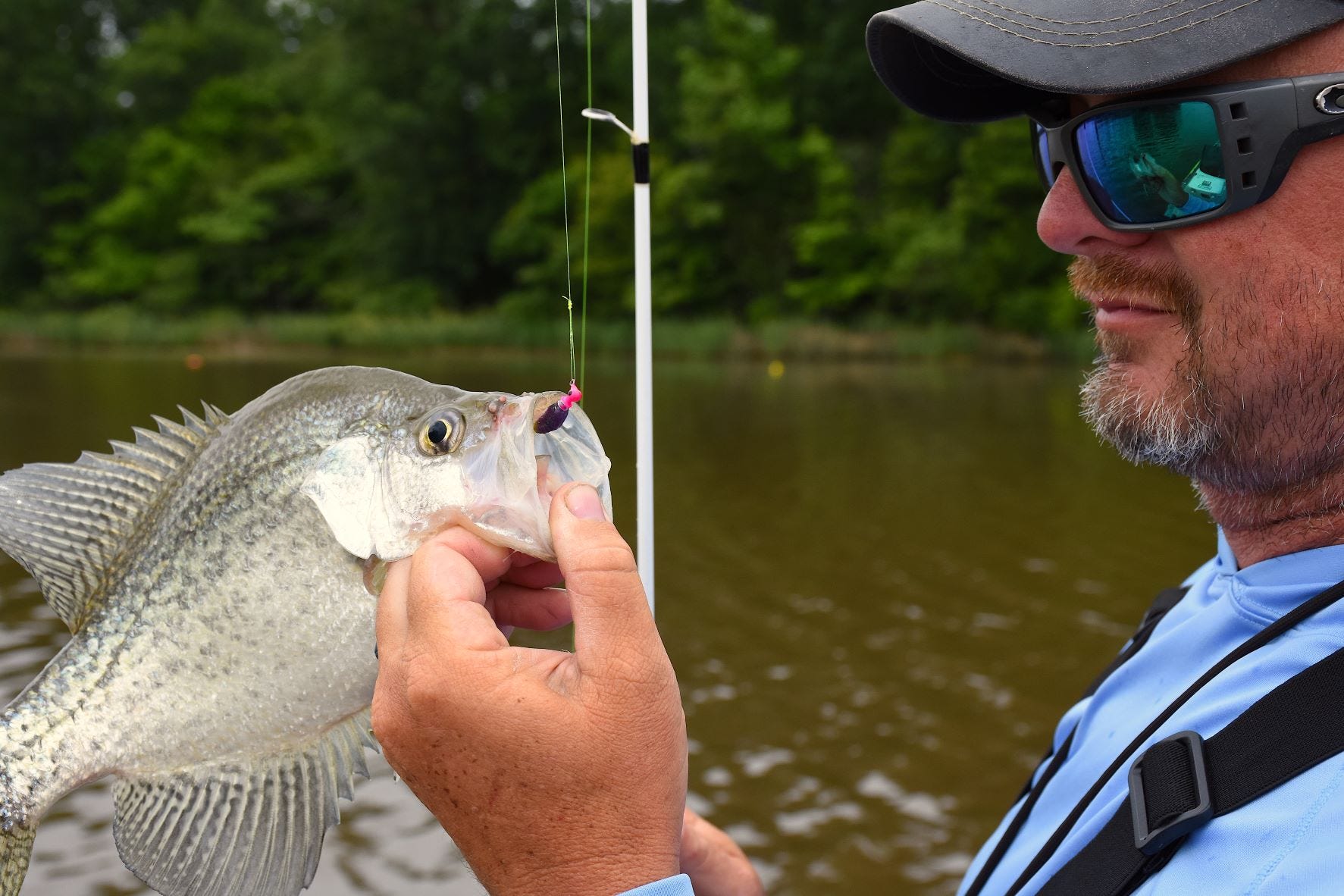

Chappell’s boat is equipped with twin Minn Kota 15-foot Talons. These electric pole anchors allow him to effectively hold the boat’s position in waters up to nearly that depth. When guiding, he seats his two guests up front, and he sits behind them in the middle to be able to watch his LiveScope screen and to coach their casts and retrieves.
For the fishing, he recommends Denali 5 ½-foot medium-light action spinning rods, and a spinning reel that is super “smoooooth.” He says a smooth reel is critical to the bait’s retrieve once the lure has a fish’s attention.
Line of choice is 6-pound hi-vis monofilament. He has experimented with braid, but doesn’t feel he gets as many bites with it. He uses a double-jig rig, tying the jigs using a loop knot.
Tied on first is a 1/16-ounce Crappie Pro Mo’ Glo Jighead, and he then follows it about 10 to 12 inches below with a Bobby Garland Itty Bits Jighead in 1/48- or 1/64-ounce size. (Both have the same #8 hook.) The larger one he adorns with a full-sized crappie bait, typically a 2.25” Slab Hunt’R, and the smaller gets fitted with an Itty Bit.
“I use this double rig, because the heavier jig helps with castability, plus allows me to quickly locate it on the screen as soon as it hits the water. Then I keep track of both jigs.”
Casts are made either to, or just beyond, the targeted cover, so that the Itty Bit can be retrieved across the top.
Tickle It
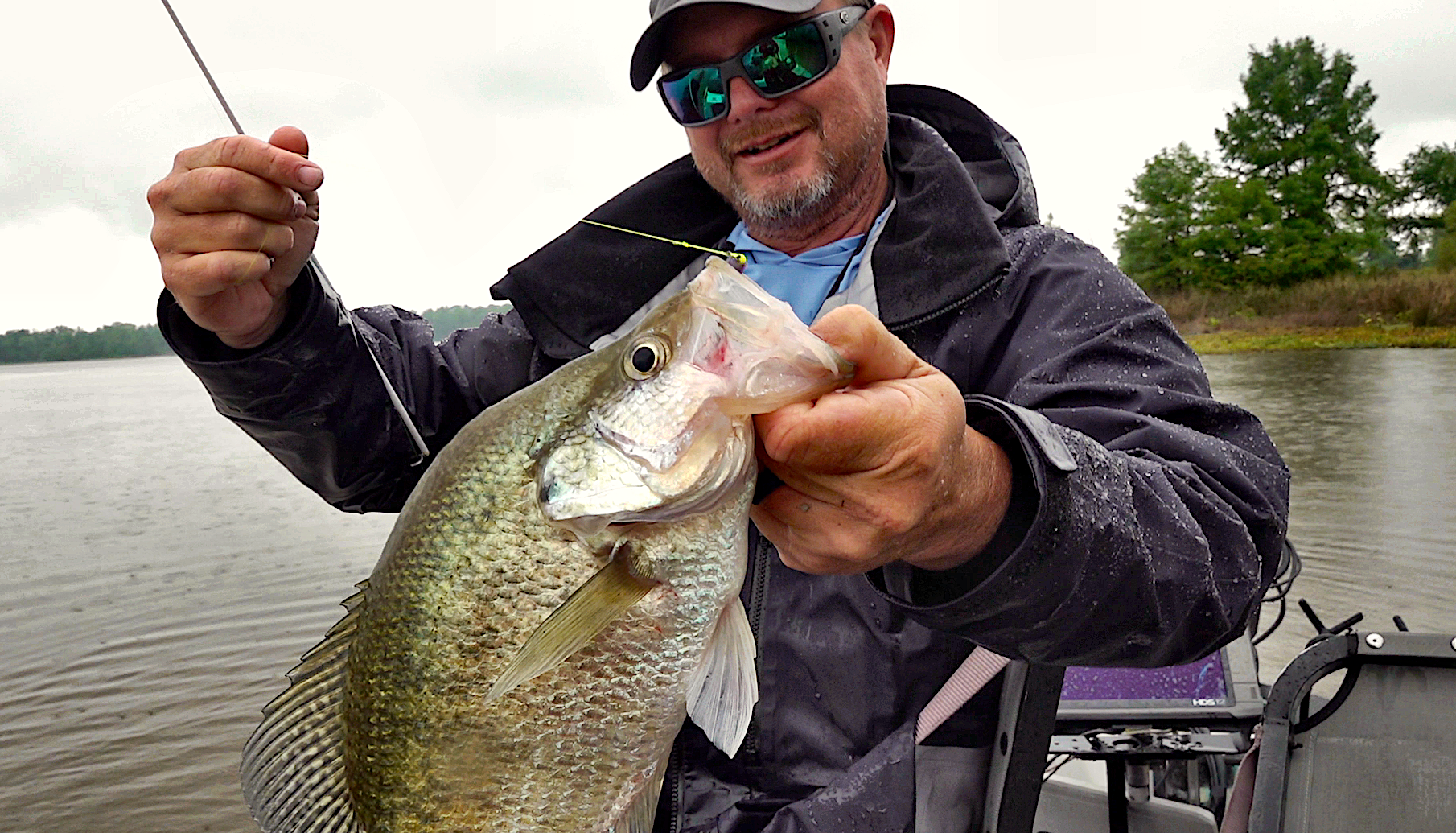

One of questions Chappell often gets asked is whether anglers will I catch fish on both jigs. “It does happen often, but I’ve found 95-percent of the catches in summer come on the Itty Bit, “Chappell said. “I’ve seen it over and over, again and again. I’m confident it’s all about the tiny baits not being intimidating to the fish in the cover, while also being a particularly ‘good match to the hatch.’”
As for how to work the jig, Chappell tells his fishing guests to “tickle it.” He says that descriptive seems to help tone down the common twitch that results in way too much movement of the little lure. Better is the subtle “tickle” that moves the bait only an inch or two. “I liken it to being pestered by a mosquito and a wasp. I’ll swat at the mosquito because it’s annoying, but I’ll do my best to get away from the wasp.”
Chappell noted that it’s common for an angler watching a crappie approach his or her lure on LiveScope to stop the bait so the fish can catch it, and doing so is usually a deal killer to getting the bite.
“It’s not natural to the crappie for something it’s trying to eat to simply stop as if saying, ‘go ahead, eat me,’ instead of trying to flee. It’s best to keep the lure moving steadily with a slow-reeling action. That’s the key to getting a bite once you have a crappie’s attention.”
Color Does Matter
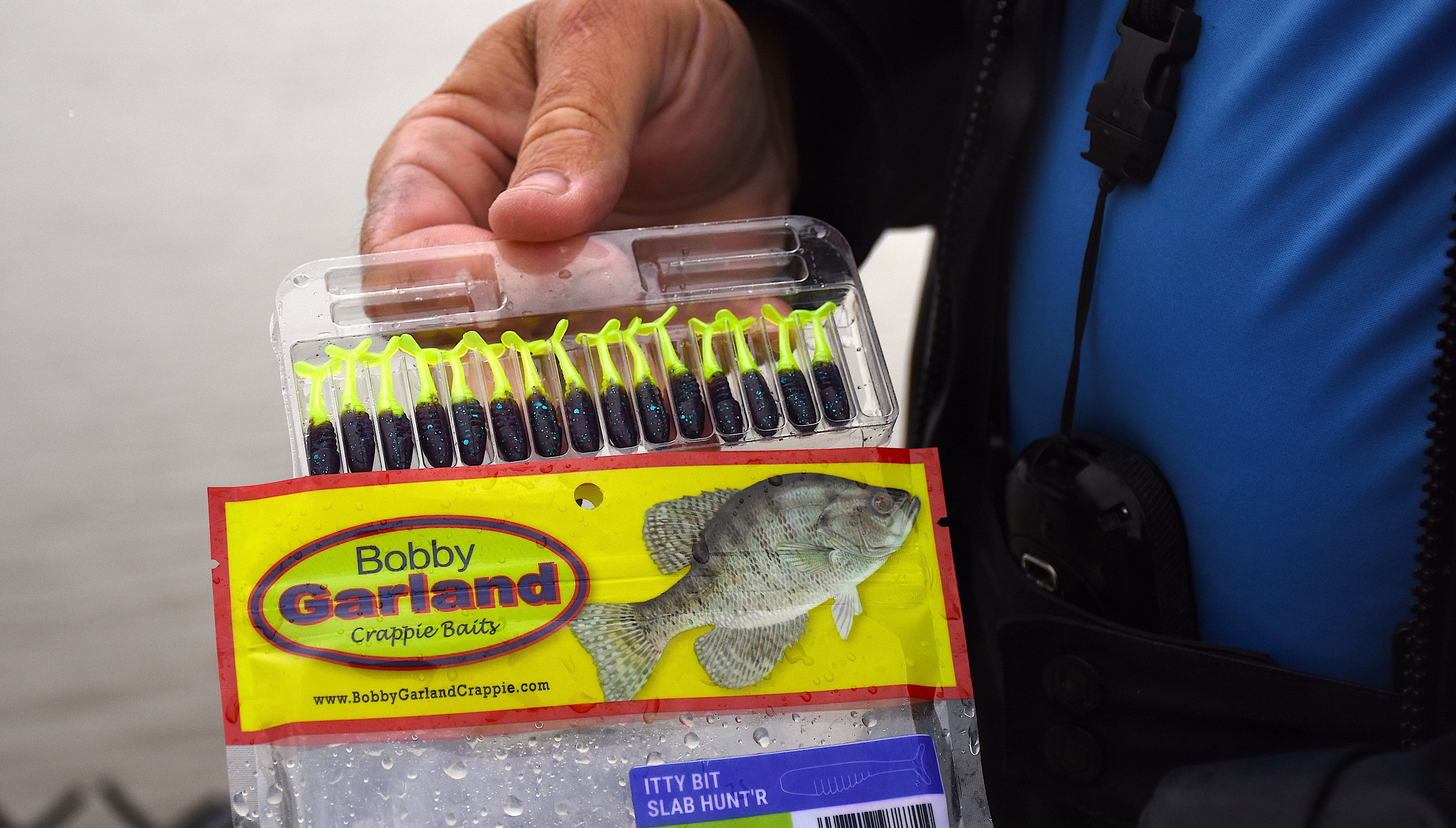

The Mississippi crappie guide is always paying attention to how crappie react to lures, and many times a change in color can be the trigger to more success.
“If I’m seeing fish follow a lure but then give up on it quickly, I know something’s not quite right. That’s when I start experimenting with different colors first, because I’ve seen it make a big difference on enough occasions to know doing so can be a game changer.”
Sure, Chappell has his favorites for Ross Barnett – Monkey Milk, Glacier, Grenada Gold and Purple Monkey – but he’s also always open-minded to a change according to what the crappie are telling him.
“If certain plastic hues or glitters seem to be getting more strikes, then I’ll keep making adjustments accordingly to preferences to see if something will indeed work better. I’ve seen such a change turn a slow day of fishing into a great day of catching. Don’t be afraid to experiment.”
Hung Up? Break It Off!


Another thing Chappell has learned from countless hours on the water with his LiveScope, is that it’s not necessary to abandon a brush pile after hanging up in it.
“Like many anglers, for years I thought hanging up in a brush pile meant the end to fishing the spot, but now I know better. Many times, and especially in summer, hanging up in a brush pile can make predators and prey more active – even to the point of making them feed better.
“So, when you get hung up, don’t fret it and don’t risk approaching the cover to try a retrieve. Instead, simply break off, re-rig and keep fishing.”
Go Small at Home
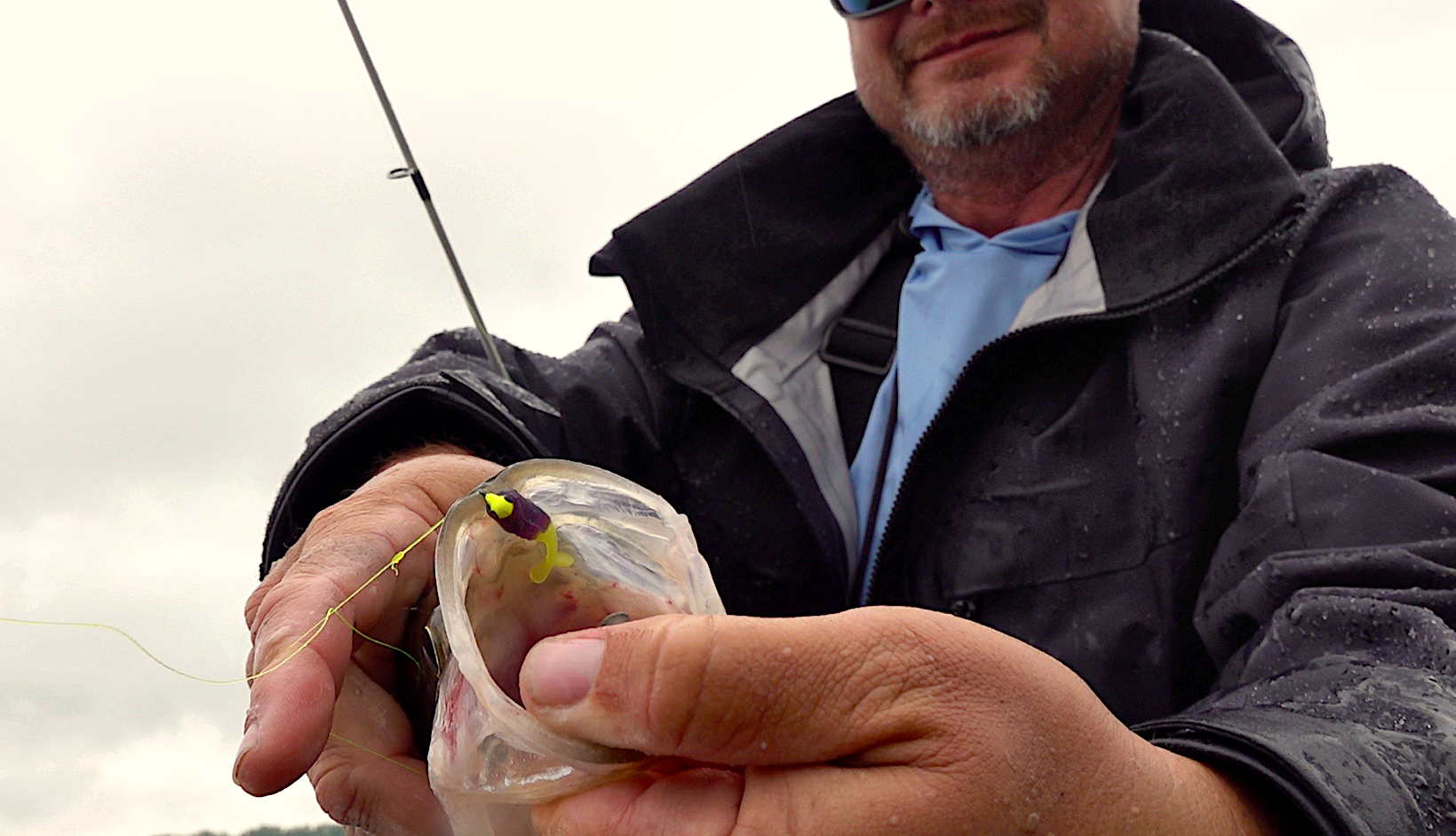

Chappell says he’s confident what he’s doing with Itty Bits on Ross Barnett in summer will work just about anywhere that crappie live. He has used them at lakes other than on his home lake and has yet to be disappointed. He adds that the approach could be an especially good one for a first visit to any new fishing hole.
“Itty Bit Slab Hunt’Rs and Swim’Rs imitate so many things, I can’t think of a situation where I’d be hesitant to try them. And don’t believe the saying that little baits only catch little fish. I know better. Crappie of all sizes eat whatever appeals to them, and I think baits of this size are always a hot item on their menus. Don’t be afraid to think small to catch more crappie.”



